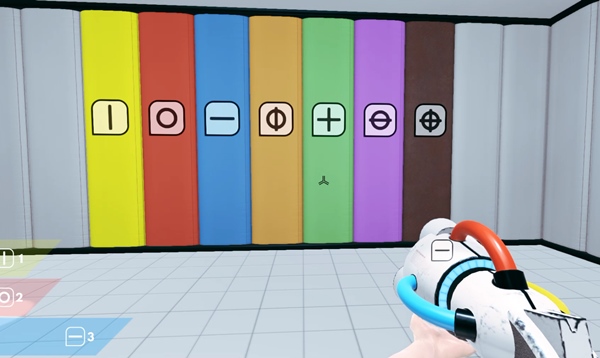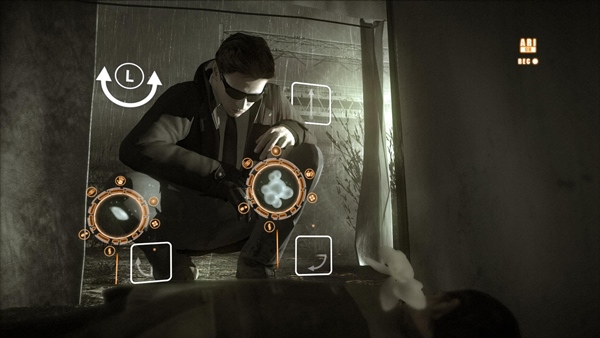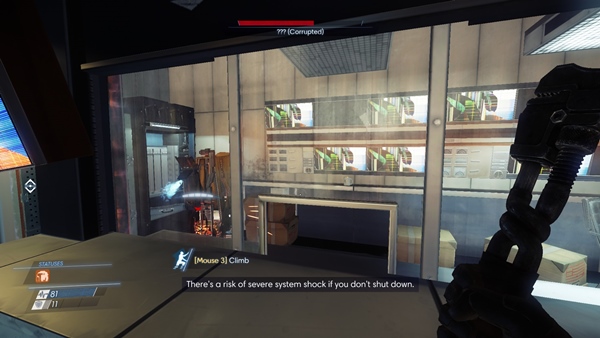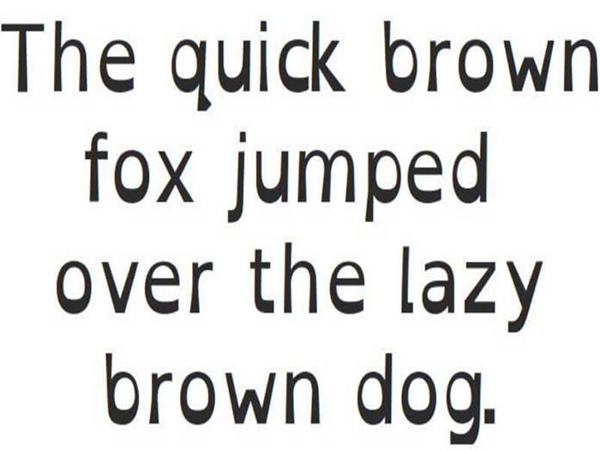Gaming for disabled – how to make games accessible for people with disabilities?
- April 29, 2022
- Karolina Cieślak
Games serve different functions and address different player needs. For some, they are a way to relax. For others, they provide a platform to establish and maintain relationships and give a sense of achievement. Therefore, it seems natural that games should be a medium equally accessible to all – also to people with disabilities.
Unfortunately, gamers with various disabilities have limited opportunities to enjoy games, which is a significant problem. This article presents specific tips on designing games for players with vision and hearing disabilities and motor disorders.
Visual impairment
Gaming almost always involves the sense of sight. Player interaction with a game involves reacting to the changing situation they observe on the screen. But what about visually impaired players?
Colorblindness
The proper, deliberate use of colors is an important aspect of game design. As we already wrote in our article, Color psychology in game design, colors not only build mood and arouse emotions, but are also an important element of gameplay. Many games use colors to give meaning to certain interface design elements or to provide specific feedback.
How to design a game so that people with colorblindness can enjoy it?
First of all, it is important to think about this in the early stage of the game development process before approving the game’s color palette. There are software tools that allow you to check how a particular color palette would be seen by players suffering from various color recognition disorders. For example, suppose a color-blind person can’t distinguish one bar from another. In that case, it is a clear signal that different colors should be used.
Examples of tools that can be used for this are Sim Daltonism and Color Oracle. In addition, the Unity and Unreal Engine have special filters built in to perform this function.
Unfortunately, you cannot always afford to swap colors safely from the perspective of general UX principles. Some colors have become the universal game industry standard, and changing them could confuse players. For example, the mana bar is always blue, and the health bar is always red. However, in such cases, it is worth making sure these elements differ in color and, for example, use different shapes. So that people who are color-blind can recognize these elements regardless of their color.
For example, the puzzle game ChromaGun allows the player to distinguish key elements by both colors and symbols. A vertical line stands for yellow, a horizontal line for blue, and a circle for red. These symbols, like colors, combine to form symbols for the derived colors – orange, purple and black. This allows you to fully understand the game even if you do not distinguish between colors.

These methods, although simple, are invaluable in the process of game design – helping you create a game that would be enjoyed by everyone, including those affected by visual impairments.
Amblyopia
To make a game accessible for visually impaired players, it is important to make its most important elements distinct and visible. This especially concerns subtitles, interface elements, and characters and objects the player can interact with. Here are some tips on how to achieve this.
- According to Mark Brown, a gaming journalist and game designer, the safest approach is to make sure the text elements of the interface are no smaller than 28 pixels, while subtitles in dialogue are at least 46 pixels.
- Options should be available to change the size of subtitles and increase the contrast of visual elements.
- When creating graphics for the game, ensure that important elements, such as interactive objects, stand out from the background, e.g., using bright colors or clear contours.
- At critical moments, when you want to draw the player’s attention to something, do so not only by changing visual elements but also by adding sound cues. For example, if you want to let the player know when the enemy is about to strike, make it clear by visually altering their movement and adding sounds, such as whispers. You could also add different sound effects to the player’s hits and misses to give them clear feedback on the effectiveness of their actions.
Motor disabilities
What difficulties do people with motor disabilities face when playing video games? How can games be designed to be as accessible as possible?
Many games, especially those developed for consoles, contain QTE (quick time event) sequences, which require you to perform particularly fast and often difficult actions. For example, the player must react very quickly to what is happening on the screen – press complicated button combinations or hold down a key for a long time. QTEs can be found in Heavy Rain, Marvel’s Spider-Man, or the Tomb Raider series.

These sequences may not be possible for people with motor impairments such as arthritis, Parkinson’s disease, or chronic muscle strain. There are a few rules to keep in mind to make the game more accessible to such players.
- As a bare minimum, games should allow the players to remap the keys according to their preferences. Some motor dysfunctions may make it difficult for the player to, for example, bend their finger to press the bottom button on the pad (R2, L2). While custom key mapping is a standard feature on PC games, it is still too rare on console games.
- Allowing the player to change the sensitivity of the controls is also very important. It’s worth including an option in the settings to change the required reaction time, adjust the dead zone of the analog stick, or slow down the controls.
- Facilitations – to help disabled players enjoy the game, there should be a setting to skip problematic QTE sequences.
- Granular control over difficulty settings – a player with a motor disability may want to lower the difficulty level of combat, but may not need to change the difficulty level of, for example, puzzles. It’s recommended to add the option to change the difficulty of different game elements independently, as in the Tomb Raider series.
The principles mentioned above are certainly worth following when designing games. However, to make sure disabled players find your game accessible, it’s best to listen to what they say about games on the internet or conduct playtests with them.
Hearing impairment
When designing games with the hearing impaired in mind, it is particularly important to ensure that the subtitles are properly designed, but not only. Here’s how to make the game accessible for the deaf and hard of hearing.
Subtitles
Figures released by Ubisoft show that as many as 60% of all Assassin’s Creed: Origins players played the game with subtitles on. Subtitles are helpful not only for those whose native language is not dubbed in the game. They are also important for the deaf or hard of hearing, or those who simply absorb information more effectively by reading than by listening.
What rules should be followed to ensure that subtitles in games serve their purpose well?
- The player should be able to change the font size according to their preference. However, if the subtitles are only available in a predefined size, they should be appropriately large. A good example of this is Life is Strange: Before the Storm, where subtitles are large enough to be readable but don’t obscure too much of the screen.

- Keep the font as simple as possible to make it as readable as possible – resist the temptation to choose ornate fonts, even if they fit stylistically with the game. Functionality is more important in this case than visual consistency. Games are a specific medium where the viewer has to focus on many things at once – reading subtitles must be made as easy as possible.
- Subtitles in games appear not only during cut-scenes but also during regular gameplay. When the view changes, e.g. the character moves, the background may change too. Therefore, it is necessary to ensure that the subtitles are legible against every background. This is best achieved by placing them in a slightly tinted, translucent frame, as in Prey. The font should also be white with a black border.

- A maximum of two lines of subtitles should be displayed on the screen at any one time, containing between 37 and 42 characters. A larger number of subtitles may be difficult to read at once or lead to cognitive overload.
- Subtitles should be displayed for an appropriate length of time – BBC data shows it possible to calculate the minimum period of time subtitles should remain on screen. It takes a human being around 0.3 seconds to read each word, so simply multiply the number of words by 0.3.
- To emphasize which character says what, put their name at the beginning of a line or, as in the Tomb Raider games, use a different color for each character’s lines.

While subtitle design may seem easy, it turns out there are a lot of factors to consider.
“Bringing the senses together and providing different options
Adding subtitles does not always solve the issue. What if the game includes a mission that involves listening for certain sounds (e.g., approaching enemies) or solving a musical puzzle (such as in The Witness)? Such sequences can add a lot of variety to the game, so you don’t have to remove them. Instead, add some options to make them accessible to the hearing impaired.
- In missions where the player has to listen for the sound of approaching enemies or characters to find, it is a good idea to add graphical cues in the form of sound waves coming from the direction the noise is coming.
- Sound puzzles should be skippable by selecting the appropriate menu option, or written hints can be added.
Other disorders
Finally, we will discuss the adaptations for people with dyslexia and epilepsy.
Dyslexia
Since people with dyslexia have difficulty reading, you can make the game more accessible for them by providing subtitles – as described in the section on hearing impairments. It is also very important that the subtitles do not change automatically. Instead, let the player press a button when they’re ready to read the next one, allowing them as much time as they need to read.
In addition, there is a special font for people with dyslexia that can be downloaded from the Open Dyslexic website. Interestingly, the developers of The Last Door, who enabled players to use this font, reported that 14% of players opted for it.

Epilepsy
Flickering images can trigger an epileptic seizure in some players. So, if certain sequences in the game involve flashing lights or images, it is a good idea to give the player an option to turn them off in the game’s settings.
If you want to check whether your game is safe for people with epilepsy, it is worth performing the Harding test. This can be done using dedicated websites.
Summary
In designing games for people with disabilities, the most important thing is to listen carefully to the community and respond to their needs. Ideally, conduct playtests with such players to identify difficulties they might encounter. It’s also essential to add options to customize the gameplay to their preferences – allow them to remap keys, change font size and typeface, colors, or sound volume.
Do you have thoughts on designing games for people with disabilities? Want to add something? Share your thoughts? Drop us a line! We are happy to discuss and even update this article.
_
Want to cite this article? Do it in an elegant way:
Cieślak, K., (2022, 29 04). Gaming for disabled – how to make games accessible for people with disabilities??
https://tryevidence.com/blog/gaming-for-disabled-how-to-make-games-accessible-for-people-with-disabilities/





